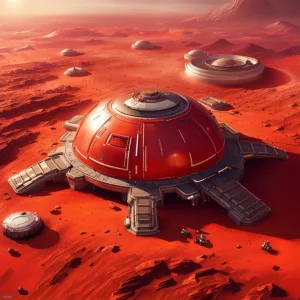Mission to Mars: the race to colonise the Red Planet (science video).
Strap in, SFcrowsnest folks, because we’re about to embark on a journey that’s more thrilling than a roller coaster ride through the cosmos. This video is a veritable smorgasbord of Martian revelations, served up with a side of interplanetary intrigue and a sprinkle of scientific speculation. Delicious, right?
First off, we have a claim that’s sure to make your space helmet spin: an interplanetary future is closer than ever with NASA, Elon Musk, and China all planning missions to Mars in the next decade. Yes, you read that right. Mars. Cue the “Star Trek” theme.
Then, our brave space pioneers have an ambition that’s as lofty as the Martian mountains: to create a permanent outpost on Mars that can function for decades and potentially be home to tens of thousands of people. That’s right, folks, it’s not all fun and games in the world of interplanetary exploration.
But wait, there’s more! A Martian system would need to be a closed loop, where nothing goes to waste. We’re talking recycling waste and utilizing it for essential purposes like drinking water and gardening. It’s like a cosmic version of a compost heap.
Now, don’t think this is a one-and-done deal. The ability to grow fresh food on Mars will be vital for the mental well-being of astronauts and to provide a sense of home in the hostile environment. So, keep your Martian green thumbs at the ready.
And in case you were wondering, yes, there’s a bit of a space-age construction project in the works. The AI Space Factory won a NASA design competition for a 3D printed Mars habitat called Marsha, which would be built on site by rovers using telescopic arms. It’s like a cosmic version of “Extreme Makeover: Home Edition.”
Finally, we’re left with a tantalizing thought: the concept of a “magic box” where bacteria can create bricks for building structures on Mars showcases the potential of synthetic biology and highlights the exciting possibilities for future missions. It’s like a cosmic magic trick, but with bacteria instead of rabbits.





